InstantPay: Making bank transfers as reliable as cash
InstantPay is a merchant-focused payments product that makes bank transfers as reliable as cash- providing instant virtual accounts, real-time transaction notifications, and secure oversight across multiple locations.
My Role
Product Designer, Interaction Design, User Flows, User Researcher
Team
Product manager, mobile & backend developers, QA tester, product designer
Timeline
2023
Background context
In a market where failed card payments pushed even small shops into relying on bank transfers, waiting hours to confirm a payment wasn’t just frustrating- it was bad for business.
At the time, merchants across Nigeria faced a growing shift: card rails were unreliable, so both big retailers and mom-and-pop stores were asking customers to pay via cash or bank transfers. But this workaround came with its own problems:
- Bank transfer confirmations could take 20 minutes to 24 hours, leaving merchants in limbo.
- Customers grew frustrated with long waits, often abandoning purchases.
- Store representatives had no secure way to confirm payments, forcing constant calls to business owners.
- Slow confirmations left merchants vulnerable to fraud from fake transfer claims
The challenge was clear: if bank transfers were going to become the default, they had to feel instant, trustworthy, and manageable.
My role
I was the sole designer on the product, working closely with a cross-functional team of developers, product managers, QA, and DevOps. The brief handed to me by the PM was straightforward in wording but complex in implications: design a product that could restore trust in bank transfers.
For me, the challenge wasn’t just creating screens. It was about translating a problem-heavy brief into a product merchants could quickly trust and adopt. That meant making calls on how to present financial data, how to structure permissions so store reps had just enough visibility, and how to balance merchant needs- all within a six-month technical delivery window.
I owned the end-to-end design process for InstantPay from user research to completion, ensuring that I delivered a product that solved critical pain points for merchants in a way that was intuitive and enjoyable to use. InstantPay was one of the first major product the company successfully shipped.
Key metrics
75%
monthly active users
36 hours
average conversion time for new users
34%
rate in cross feature adoption
Over 10x
average daily merchant revenue
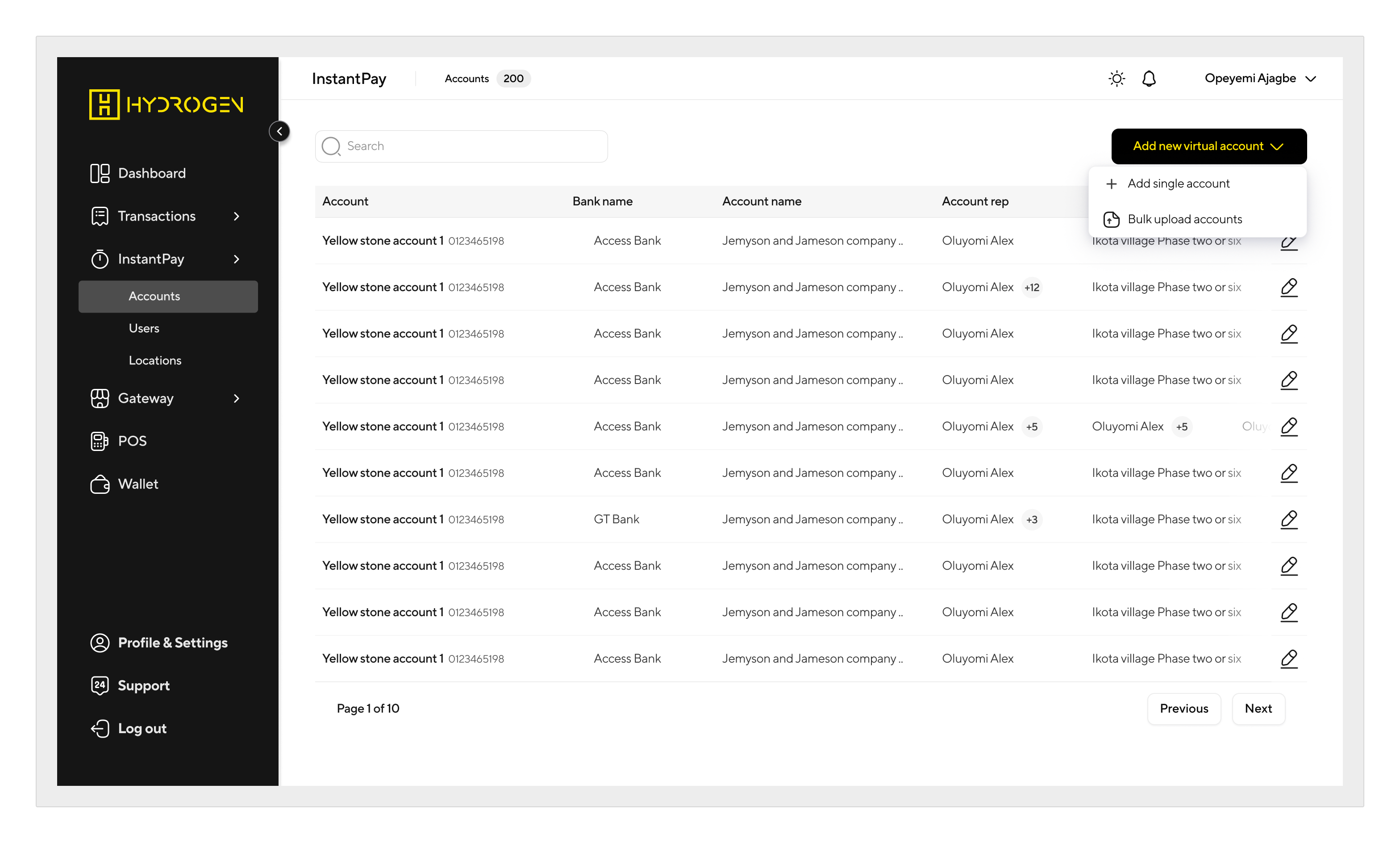
Table of Contents
Insights from market research
Data from the researched brief showed some interesting recurring themes that painted a clear picture of merchants’ frustrations and their urgent need for a reliable solution
Opening accounts was a burden
Merchants disliked the lengthy paperwork and bureaucracy required to open business accounts
Transfers were painfully slow
Bank transfer confirmations could take 20 minutes or up to 24 hours
Customers exploited slow confirmations
Because transfers weren’t confirmed instantly, some customers showed fake transfer alerts or screenshots as proof of payment
Staff lacked real time transaction visibility
Store reps had no independent way to confirm payments
As I dug deeper, what surfaced wasn’t just operational pain but human friction: merchants struggled with trust, accountability, and the constant risk of fraud. Solving this meant going beyond transactions to redesign relationships
Breaking down the problem: Forming assumptions
Pressed for time, we were given 6 months to build a complete MVP and test our assumptions. Some of the assumptions I made that influenced my design decisions were
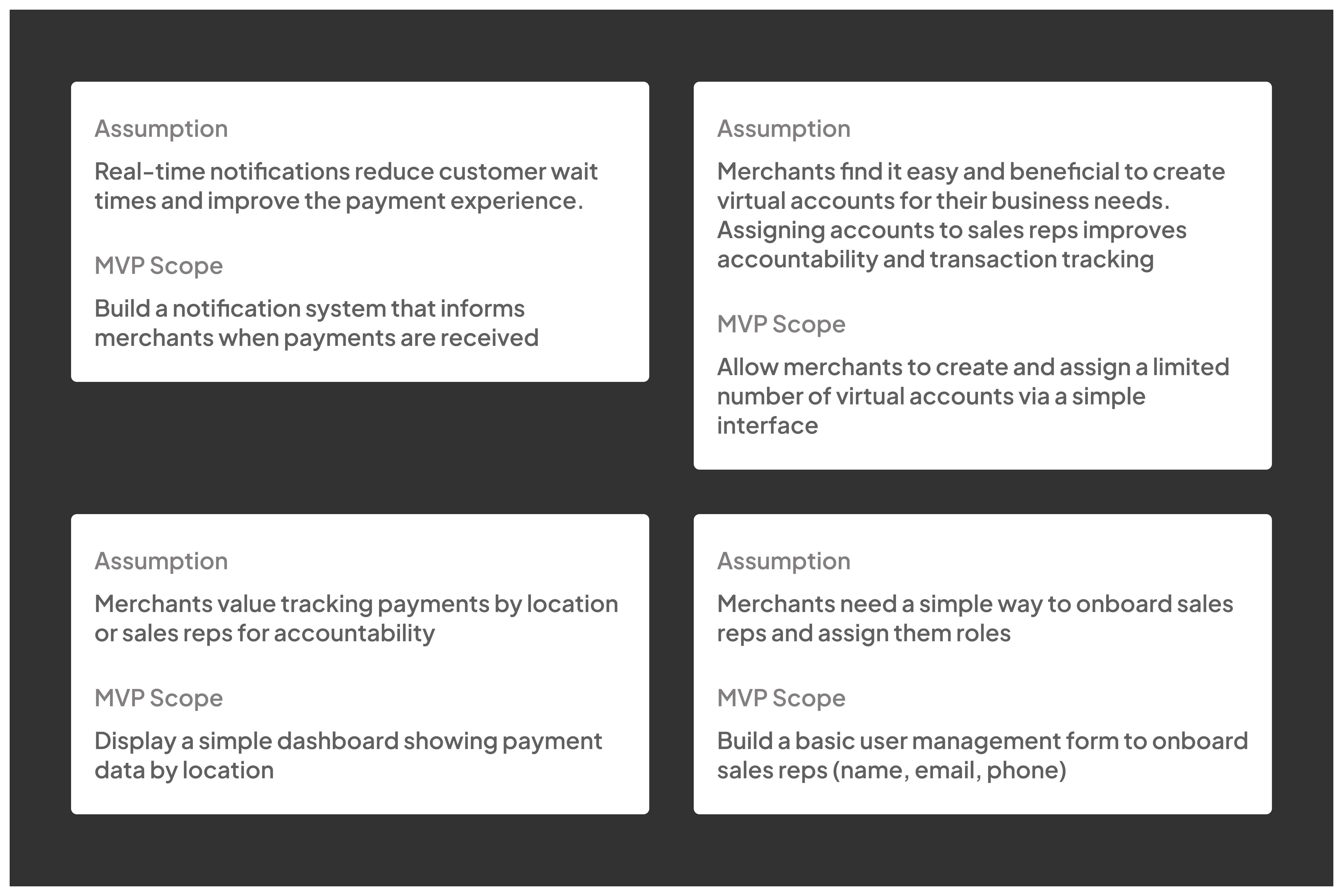
Version 1 : Instantpay MVP
I adopted and extended the existing design system to guide component usage, layout structure, and interaction patterns. This ensured every part of the MVP was not only functional but also cohesive.
Real-Time Oversight at a Glance
I designed a centralized dashboard where merchants could instantly see account details, monitor all transactions, switch between accounts, and create new virtual accounts on demand.
This gave merchants complete visibility and control in one place, reduced friction in managing multiple accounts, and built confidence in using Instantpay as their primary payment tool
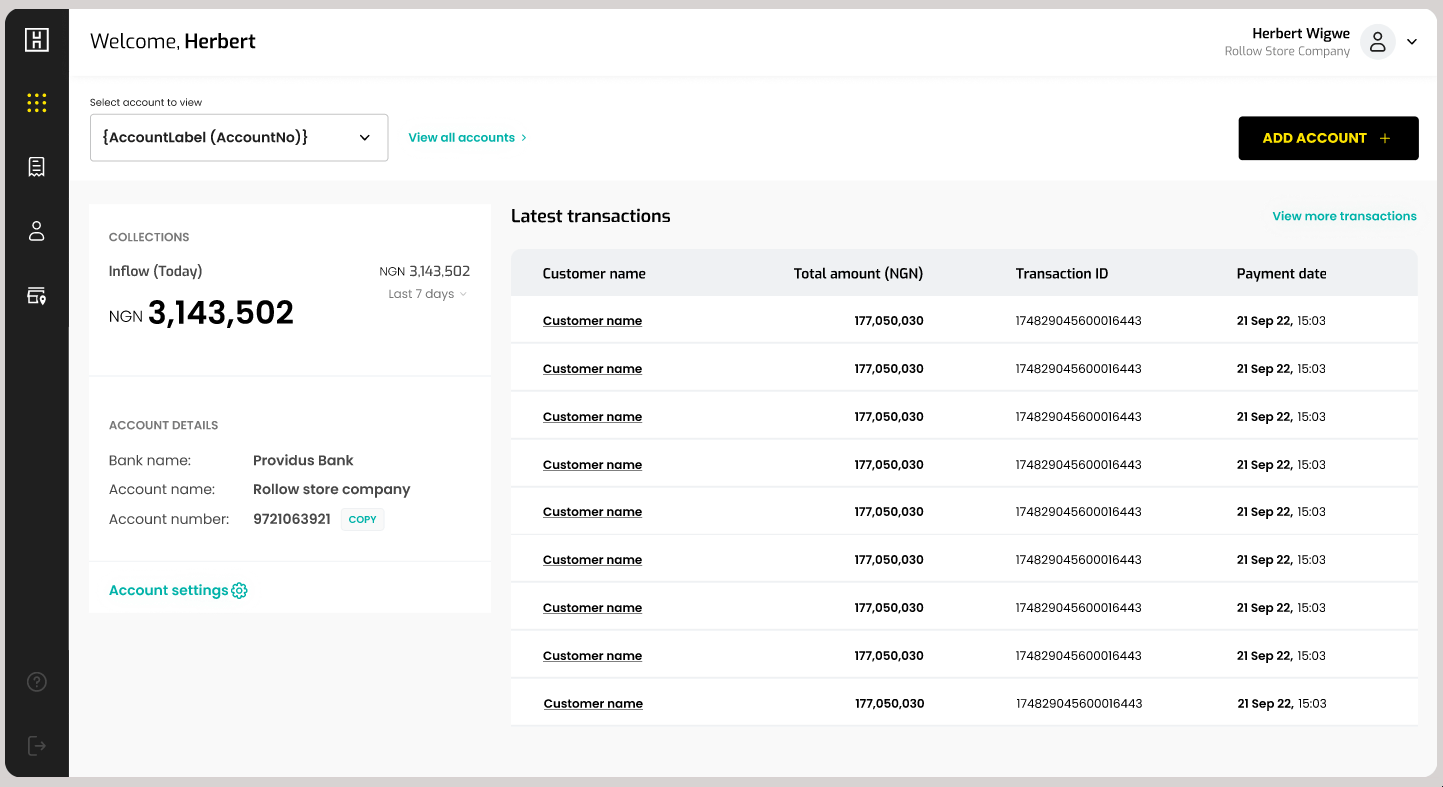
Generate bank accounts in less than 30 seconds
What was once a bank-driven, bureaucratic process became a seamless, self-service experience. Merchants could spin up new accounts in seconds, customize them to their operations, and maintain better oversight without the overhead of traditional banking
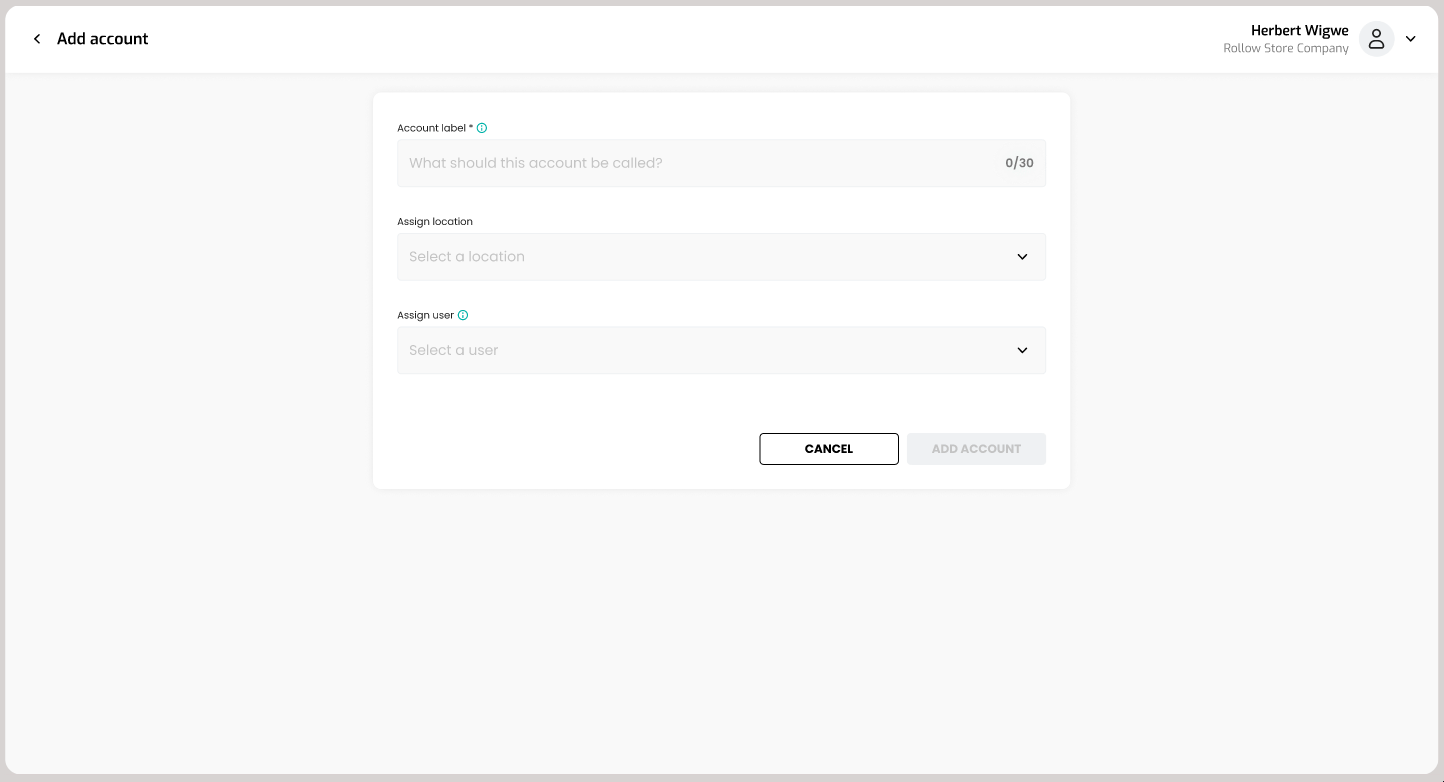
Track transactions in real time
Merchants had access to transaction as they happened. They could also filter transactions by locations and accounts
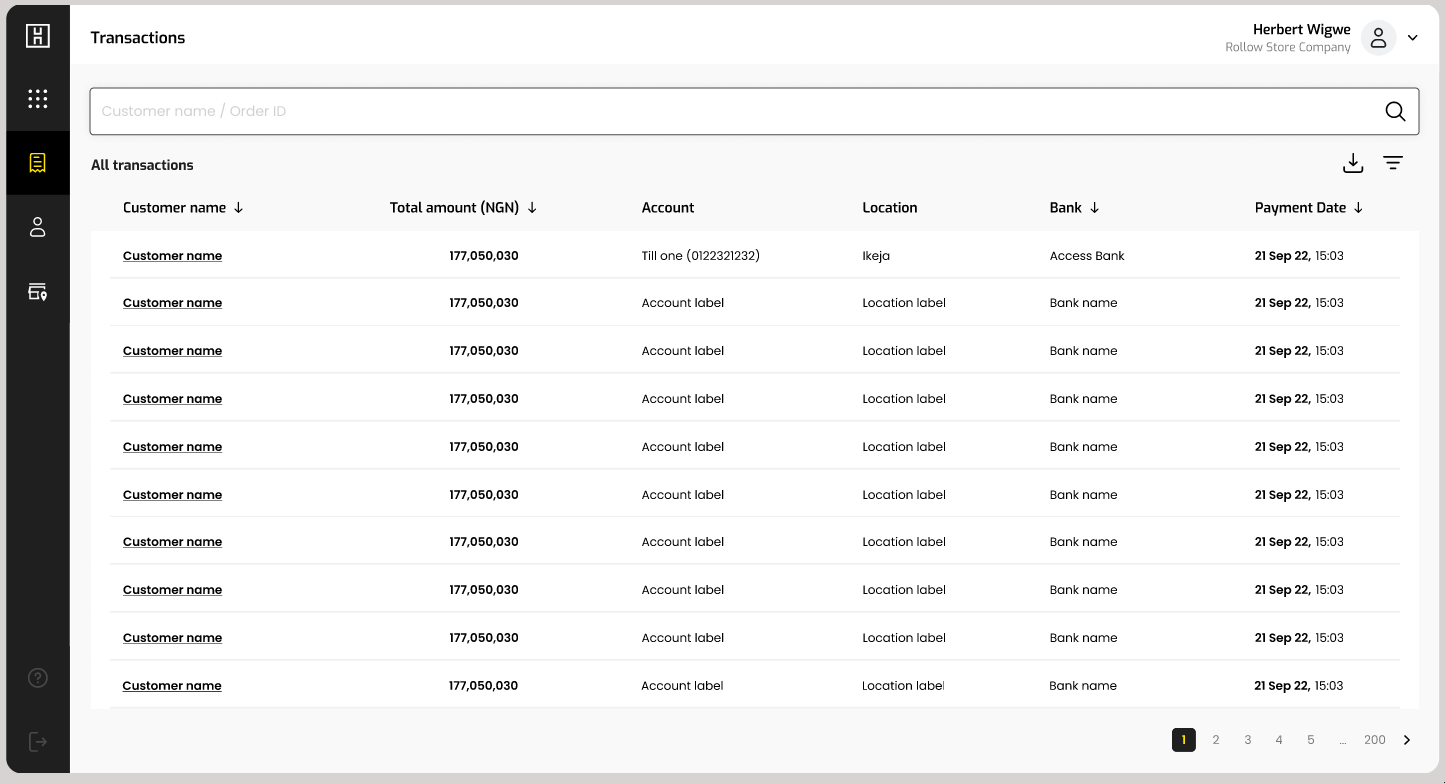
Onboard staff with ease
I designed a flexible user management- merchants could invite staff into Instantpay, assign or unassign accounts, and disable or delete user access at any time.
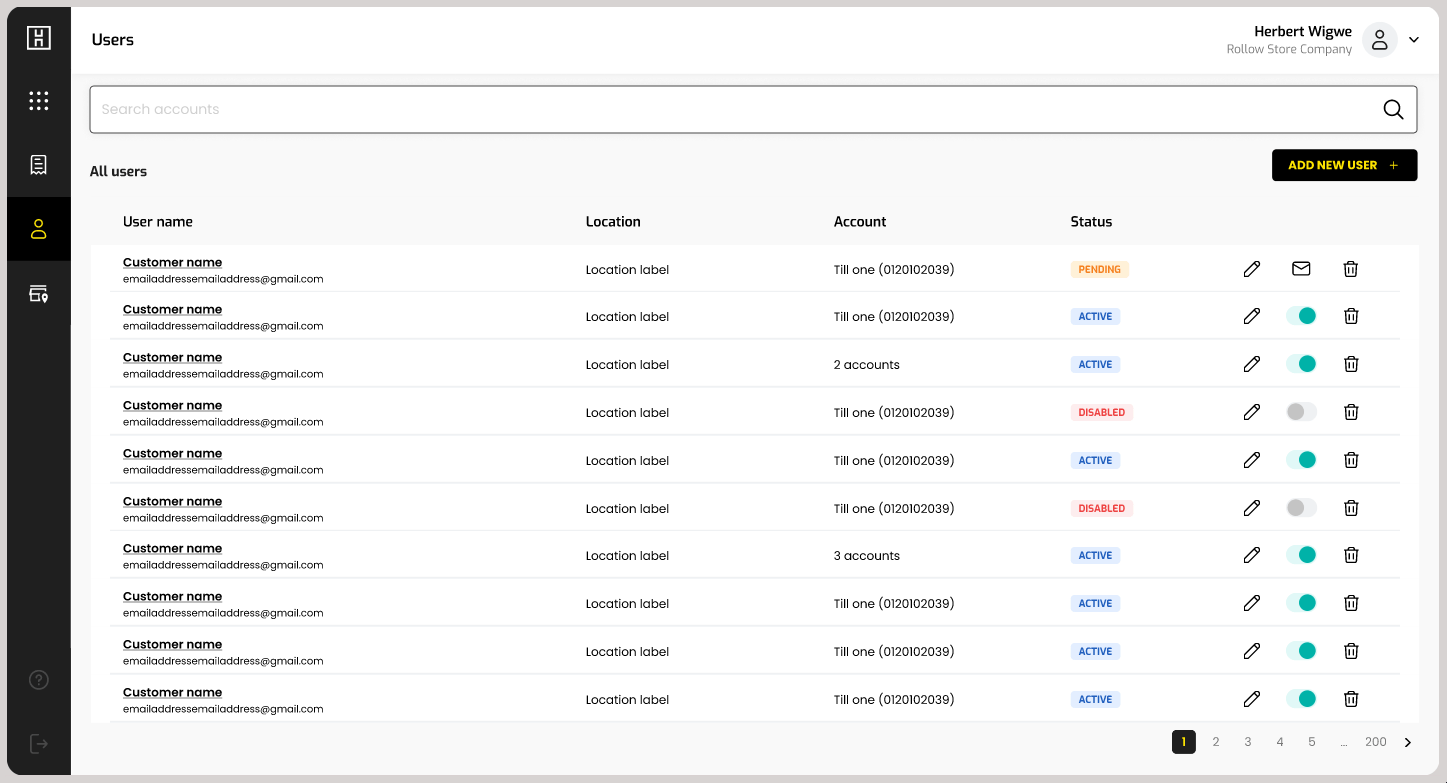
Staff dashboard view
I designed staff-specific dashboards where they could view all transactions tied to their assigned accounts, without exposing sensitive merchant-wide financial data.
This gave staff the autonomy to confirm payments instantly, reduced reliance on calling business owners for verification, and strengthened customer trust during transactions—all while preserving merchant control and oversight
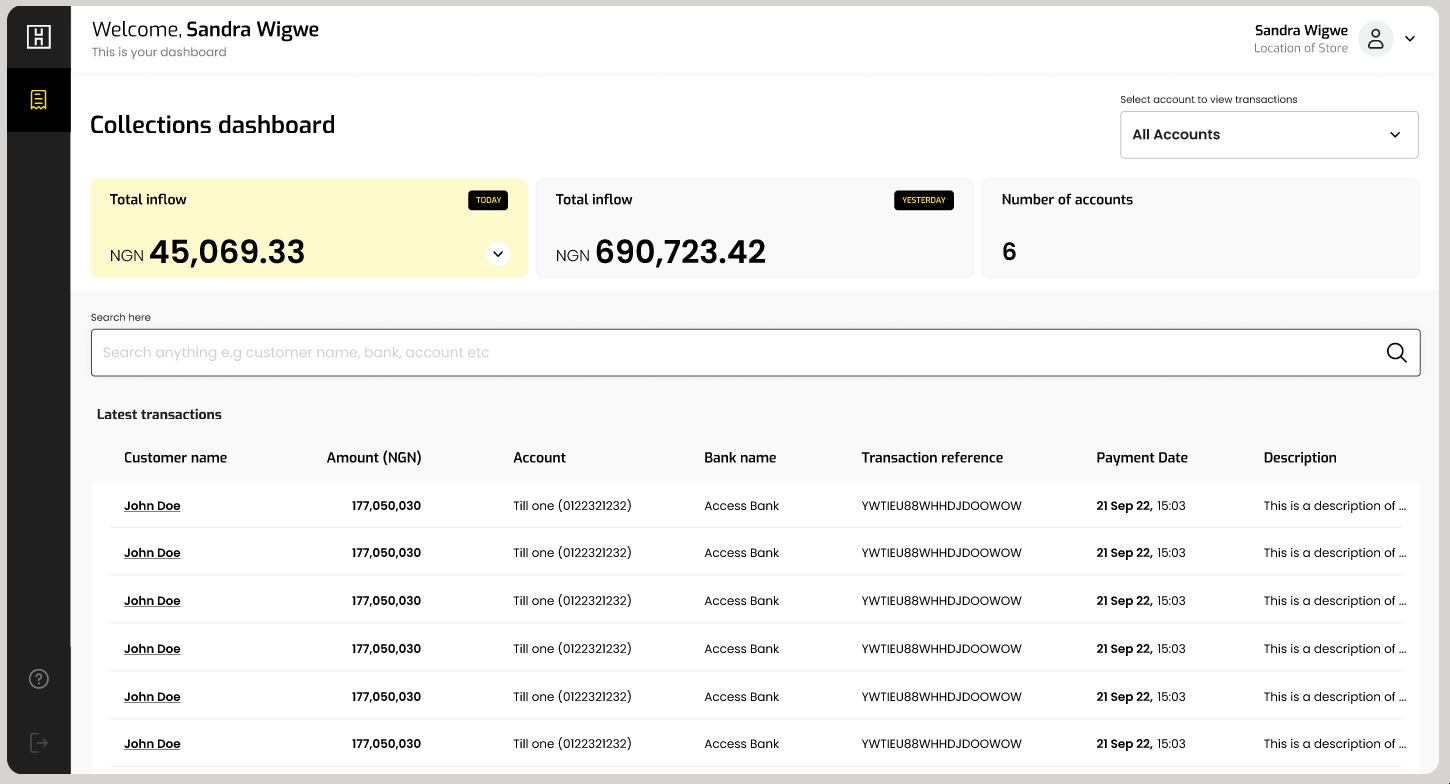
Quantifiable impact
To qualify it a success, we measured user adoption, retention, payment confirmation times amongst other metrics to validate Instantpay’s impact on our users
-
Merchants got payments and notifications in 55 seconds or less
-
80% of merchants reported high levels of user satisfaction due to faster payments with Instantpay accounts
-
Merchants reported decrease in cases of fake transfer confirmations
-
Post-launch adoption was strong, with merchants actively using Instantpay daily
Version 2: Enriching the dashboard
Feedback rolled in quickly: the MVP solved the most urgent pain point; merchants valued the instant transfer and confirmations, but wanted more visibility into patterns throughout the day. Were mornings busier than evenings? Were certain days more active than others?
With these insights in hand, I led the second iteration of InstantPay, enriching the dashboard with a broader view of transaction trends throughout the day.
The design challenge was adding depth without overwhelming them. I solved this by keeping the interface clean and layering information so that merchants could dive deeper when needed.
I added
– Payment trend visualizations (traffic throughout the day)
– Streamlined flows for viewing and switching between multiple virtual accounts
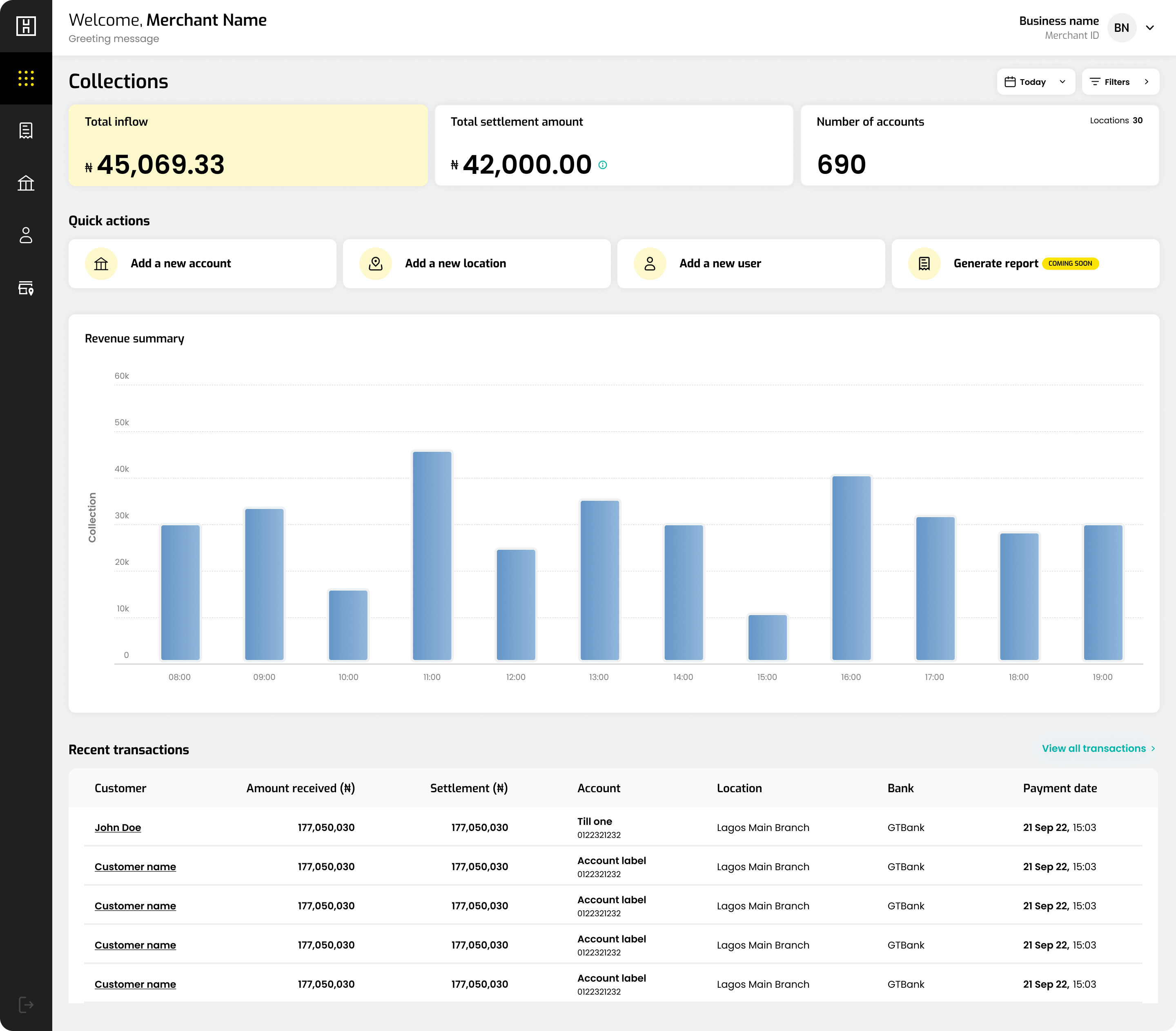
Version 3: Poseidon and migration
Later, HydrogenPay began consolidating products under an omniportal strategy and rolled out Poseidon, the company’s design system.
I collaborated with the wider design team to reimagine InstantPay in line with the new system.
This ensured visual and functional consistency across the growing product suite, while preserving the integrity of what merchants had already embraced.
Virtual business bank accounts in seconds
Merchants can generate multiple virtual bank accounts on the InstantPay platform. These accounts can be used as a standalone account or assigned to users and locations. However, all transactions are under the merchant’s control, with same day or next day settlements, depending on the settlement cycle
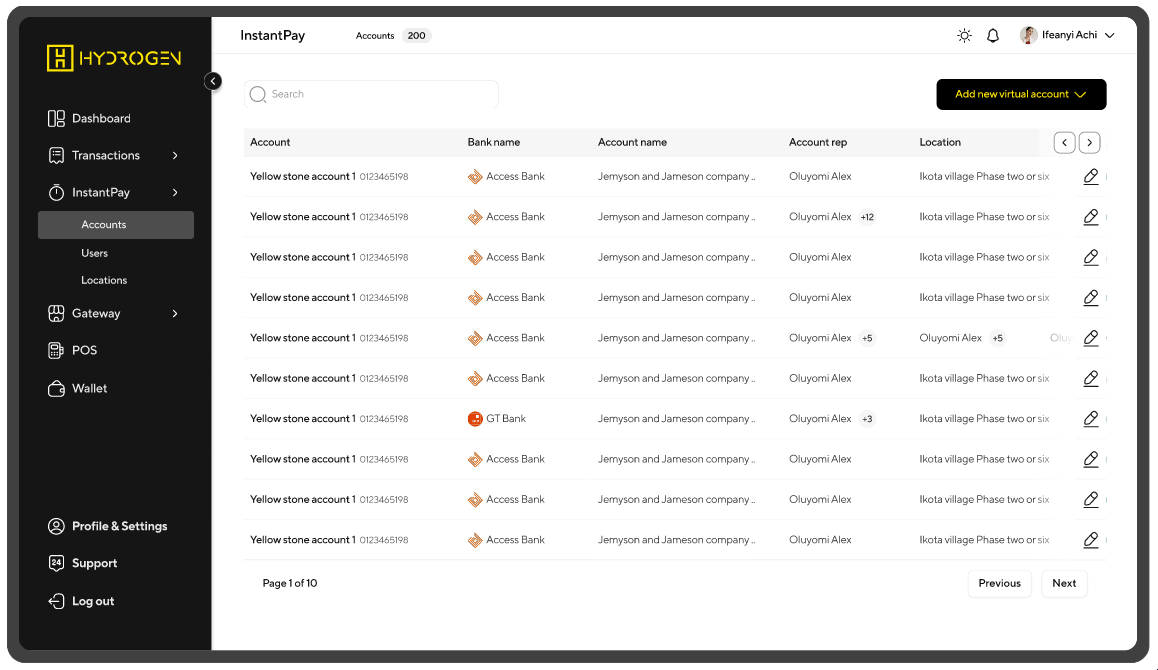
User management
Before store reps can be assigned accounts, they would have been added to the merchant’s business. InstantPay allows merchants to manage their sales representatives by creating an account for them on the platform
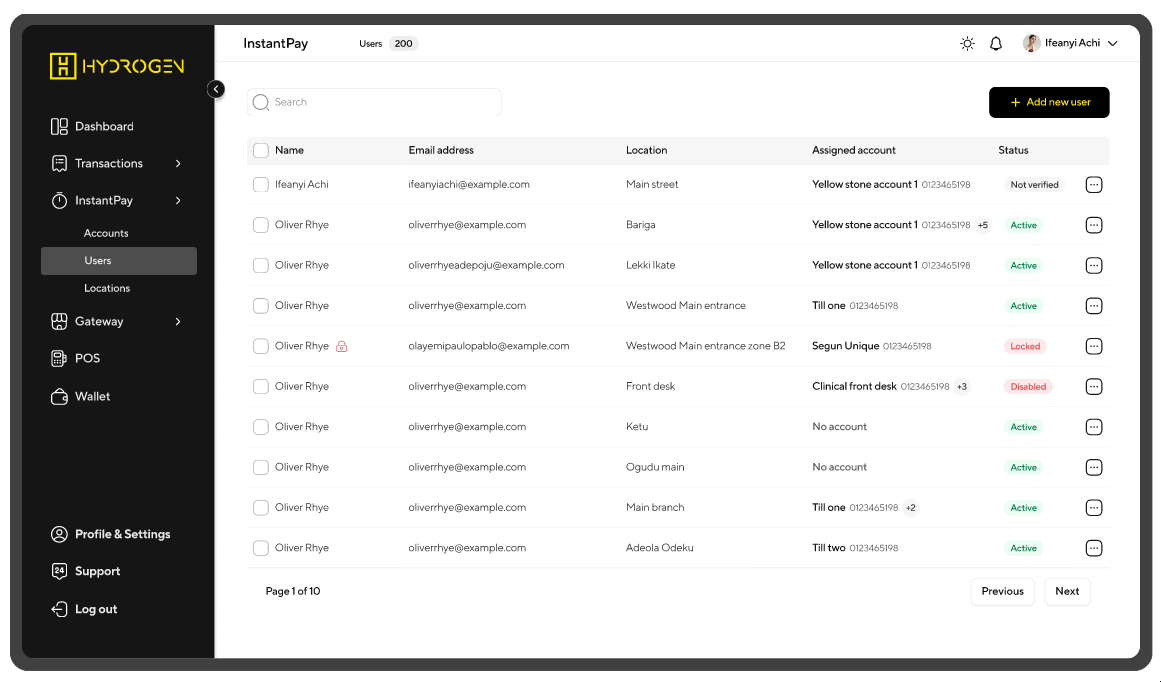
When necessary, merchants can also disable or enable users and ensure full control over who can collect payments at any given time.
Location management
For merchants with multiple locations, InstantPay provides a comprehensive location management module. Merchants can assign specific store reps to different locations, monitor payments for each location, and enable or disable locations as needed. The platform’s dashboard allows merchants to have a clear, consolidated view of all locations.
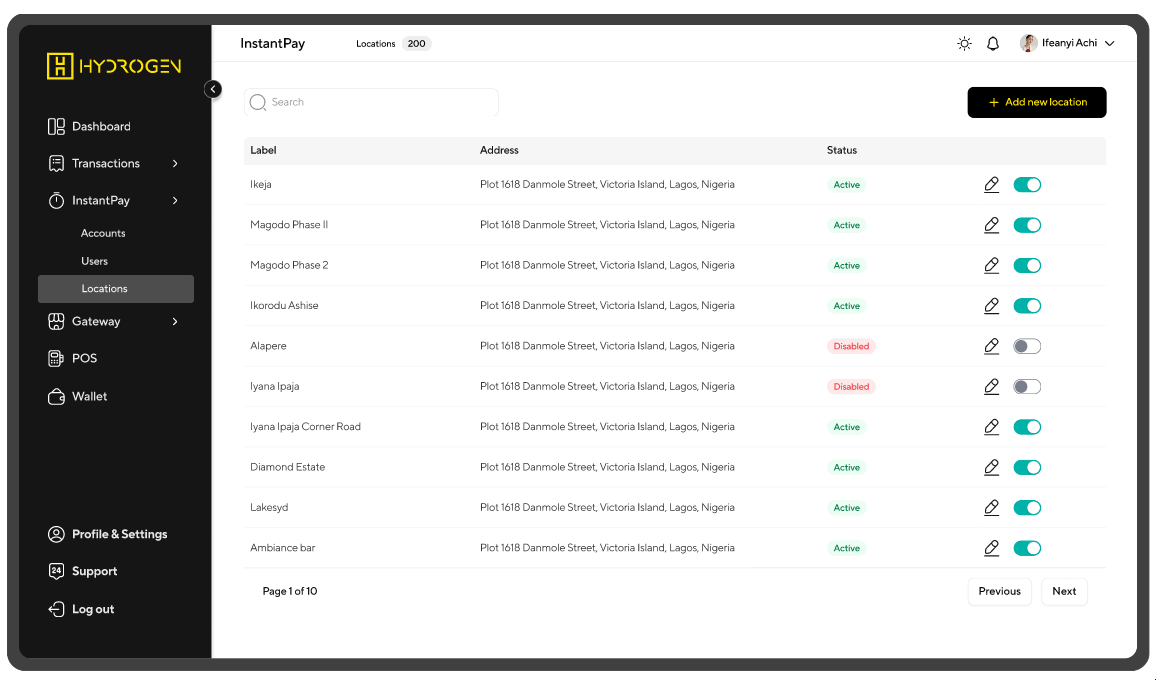
We moved transactions
Transactions page was moved so we merchants could have a central place for viewing transactions across all products
I led Mixpanel implementation company wide
Few months after launching Instantpay, I spearheaded HydrogenPay’s adoption of Mixpanel to ensure we could measure impact, not just ship features. I created a tracking plan that revealed how merchants actually used the product- most created multiple accounts within their first week, and staff dashboards quickly became part of their daily routine. These insights validated my design decisions, shaped the roadmap for future iterations, and established a culture of data-driven decision-making across the company
75%
monthly active users
36 hours
average conversion time for new users
34%
rate in cross feature adoption
Over 10x
average daily merchant revenue
Key Lessons
Clarity Over complexity
Simplifying complex processes, like creating virtual accounts or managing multiple locations, reinforced the principle that good design should make the complicated feel seamless
Collaboration is a superpower
Working closely with stakeholders, like product managers and engineers, highlighted the value of collective problem-solving and aligning diverse perspectives to build impactful solutions
Measure what matters
Designing with quantifiable outcomes in mind taught me the importance of tying design choices to real-world impact
Patience with people and processes
Understanding that merchants might be skeptical of new tools reminded me to respect users’ learning curves and design for gradual adoption